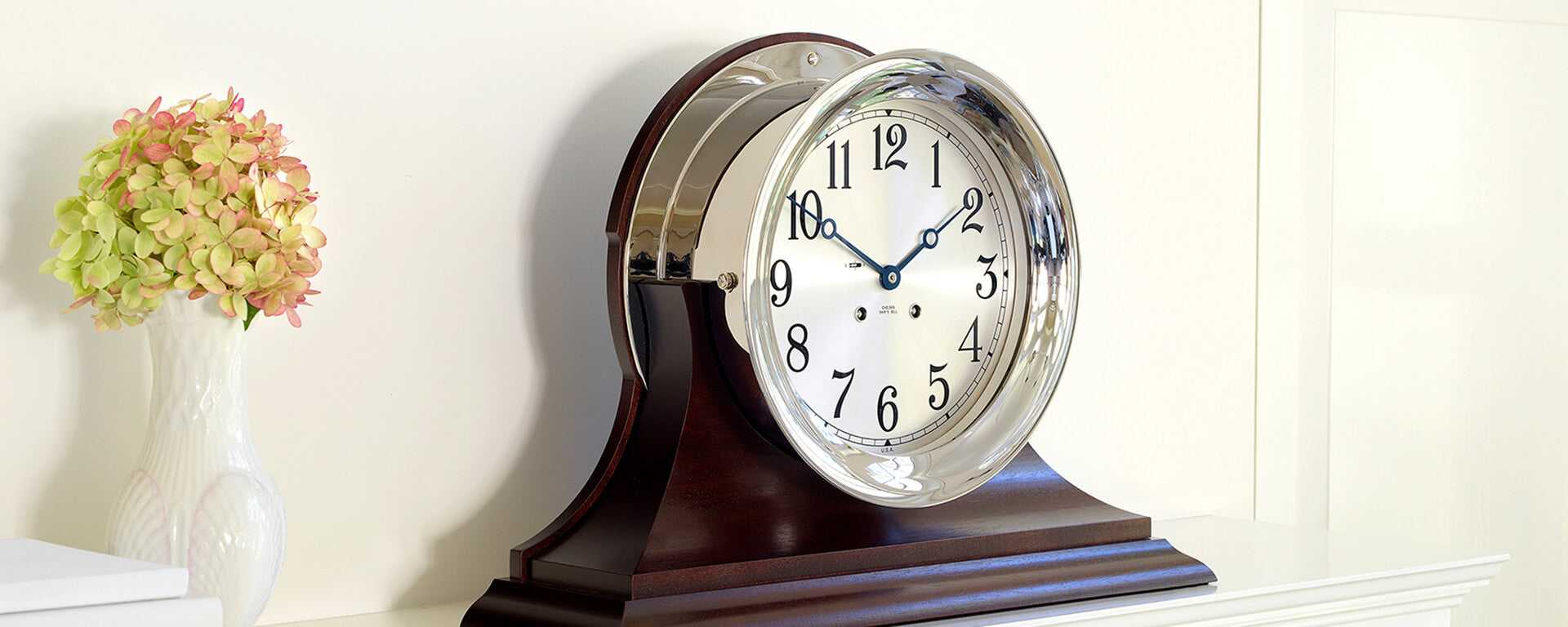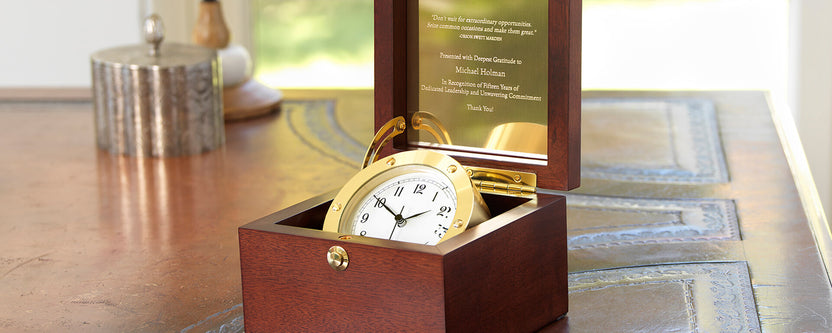Trains Setting the Standard for Time
As you set the motion of the precise hands of a Chelsea Clock to observe that time has sprung ahead one hour Sunday March 13th, think of the motion of humans traveling to and from towns, cities and states by train as the impetus for the United States to adapt a standard time. Piggybacked onto that was the passage of the daylight saving time.
“The standard time was developed because of the railroad,” said Geoff Chester of the United States Naval Observatory (USNO) in Washington D.C. The USNO is in charge of the master clock that keeps the official time for the Department of Defense, precisely coordinated with the Prime Meridian. Surprisingly though, it is the Department of Transportation’s responsibility to distinguish the boundaries of the standard time zones across the country.
 Rare Clock Made by Boston Clock, Chelsea Clock Company\'s predecessor, originally named the “Locomotive” for its use in trains in the late 1800’s
Rare Clock Made by Boston Clock, Chelsea Clock Company\'s predecessor, originally named the “Locomotive” for its use in trains in the late 1800’s
Before the Industrial Revolution people saw clocks as an attainment of social wealth explained Director of the Willard House and Clock Museum Cynthia Dias. “People did not consider purchasing clocks during those times because time was set by the seasons and the setting or rising of the sun,” said Dias. As a mainly agricultural society, time devices were not needed as a person’s daily schedule was coordinated with nature. “The roosters calling and cows mooing and all the animals waiting to be fed” woke people up if they weren’t already awaken to tend to the land. When society turned more mechanical so did people’s needs, and thus more succinct and comparable measurements for time were required. With the Industrial Revolution came the advent of a booming train system, factories, and people having a need to be at a certain place at a specific time. Those happenings impacted society’s perception of time.
Up until the adaption of standard time in the 1880’s most communities would observe some form of local mean solar time, or observe the time of a nearby city, which was proved problematic for the railway system. For example if one travels one degree longitude it translates into roughly four minutes of time. With an increased access of trains, uncoordinated time nationally, and varying railroad companies supplying the demanded service, trains often got “off track” and as a result tragedy ensued. “If you were running trains along an east west route, unless you made sure conductors adjusted their watches at different depots or used one time scale over your entire route, you would end up with a situation of two trains on one track going in the opposite direction. And that did happen resulting in significant life loss,” Chester said as a matter of fact.
That is how the issue of adapting a standard time became a major concern for the DOT, codified into law in 1918; however the notion of daylight saving time was first rejected with the passage of that bill. Daylight saving time, first proposed in Europe — although some credit Benjamin Franklin for the original thought — did not become an accepted idea until after its use during World War II. The United States borrowed the idea to provide a more efficient, longer work day required for the nation during the time of war. After that the issue of adhering to daylight saving time had once again become one of locality, until it became federal law in 1966. And it may still be an issue for some as many will reminisce over that one hour of lost sleep this weekend.








